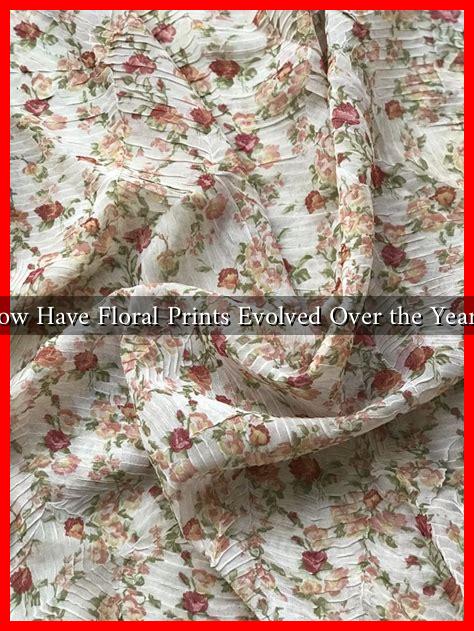-
Table of Contents
How Have Floral Prints Evolved Over the Years?
Floral prints have long been a staple in the world of fashion and design, captivating audiences with their vibrant colors and intricate patterns. From the delicate motifs of the Victorian era to the bold, abstract designs of contemporary fashion, floral prints have undergone significant transformations. This article explores the evolution of floral prints, examining their historical context, cultural significance, and modern interpretations.
The Historical Roots of Floral Prints
Floral prints can be traced back to ancient civilizations, where they were used in textiles, pottery, and art. The use of floral motifs has been documented in various cultures, including:
- Ancient Egypt: Floral designs were often incorporated into clothing and decorative arts, symbolizing fertility and life.
- China: The Tang and Song dynasties saw the emergence of intricate floral patterns in silk fabrics, often representing prosperity.
- Europe: The Renaissance period marked a significant shift, with floral prints becoming popular in tapestries and garments, reflecting the era’s appreciation for nature.
During the 18th century, floral prints gained prominence in Europe, particularly in France and England. The introduction of block printing techniques allowed for more intricate designs, leading to the creation of iconic fabrics like chintz and toile de Jouy.
The Victorian Era: A Flourishing of Floral Designs
The Victorian era (1837-1901) was a pivotal time for floral prints, characterized by a fascination with nature and the romanticism of the natural world. Key features of this period included:
- Complex Patterns: Floral designs became more elaborate, often featuring a mix of flowers, leaves, and vines.
- Symbolism: Different flowers were imbued with meanings, influencing the choice of patterns in clothing and home decor.
- Technological Advances: The invention of the sewing machine and advancements in dyeing techniques made floral prints more accessible to the masses.
Notable designers like William Morris embraced floral motifs, creating textiles that celebrated the beauty of nature. His work laid the foundation for the Arts and Crafts Movement, which emphasized handcrafted quality and natural forms.
The 20th Century: From Retro to Modernism
The 20th century witnessed a dramatic shift in floral print design, influenced by various artistic movements and cultural changes. The following decades brought about distinct styles:
- 1920s-1930s: Art Deco introduced geometric floral patterns, merging modernism with traditional motifs.
- 1960s-1970s: The counterculture movement embraced bold, psychedelic floral prints, reflecting a desire for freedom and self-expression.
- 1980s-1990s: Designers like Gianni Versace and Vivienne Westwood incorporated oversized floral prints into high fashion, making them synonymous with luxury.
During this time, floral prints also found their way into everyday fashion, with brands like Liberty London popularizing smaller, more delicate patterns that appealed to a broader audience.
Contemporary Floral Prints: A Fusion of Styles
Today, floral prints continue to evolve, blending traditional elements with modern aesthetics. Contemporary designers are experimenting with:
- Abstract Designs: Floral motifs are often reimagined in abstract forms, creating a fresh take on classic patterns.
- Digital Printing: Advances in technology allow for intricate designs and vibrant colors that were previously unattainable.
- Sustainability: Eco-conscious brands are using organic materials and sustainable practices to create floral prints, appealing to environmentally aware consumers.
Fashion houses like Gucci and Dolce & Gabbana have embraced floral prints in their collections, showcasing them on runways and in campaigns. The resurgence of vintage styles has also led to a renewed interest in retro floral patterns, making them a staple in modern wardrobes.
Conclusion: The Timeless Allure of Floral Prints
Floral prints have come a long way from their ancient origins to their contemporary interpretations. Their ability to adapt to changing cultural and artistic landscapes has ensured their enduring popularity. As we look to the future, it is clear that floral prints will continue to evolve, reflecting the values and aesthetics of each new generation. Whether through intricate designs or bold statements, floral prints remain a timeless expression of beauty and creativity.
For more insights into the world of fashion and design, visit Vogue for the latest trends and historical perspectives.

